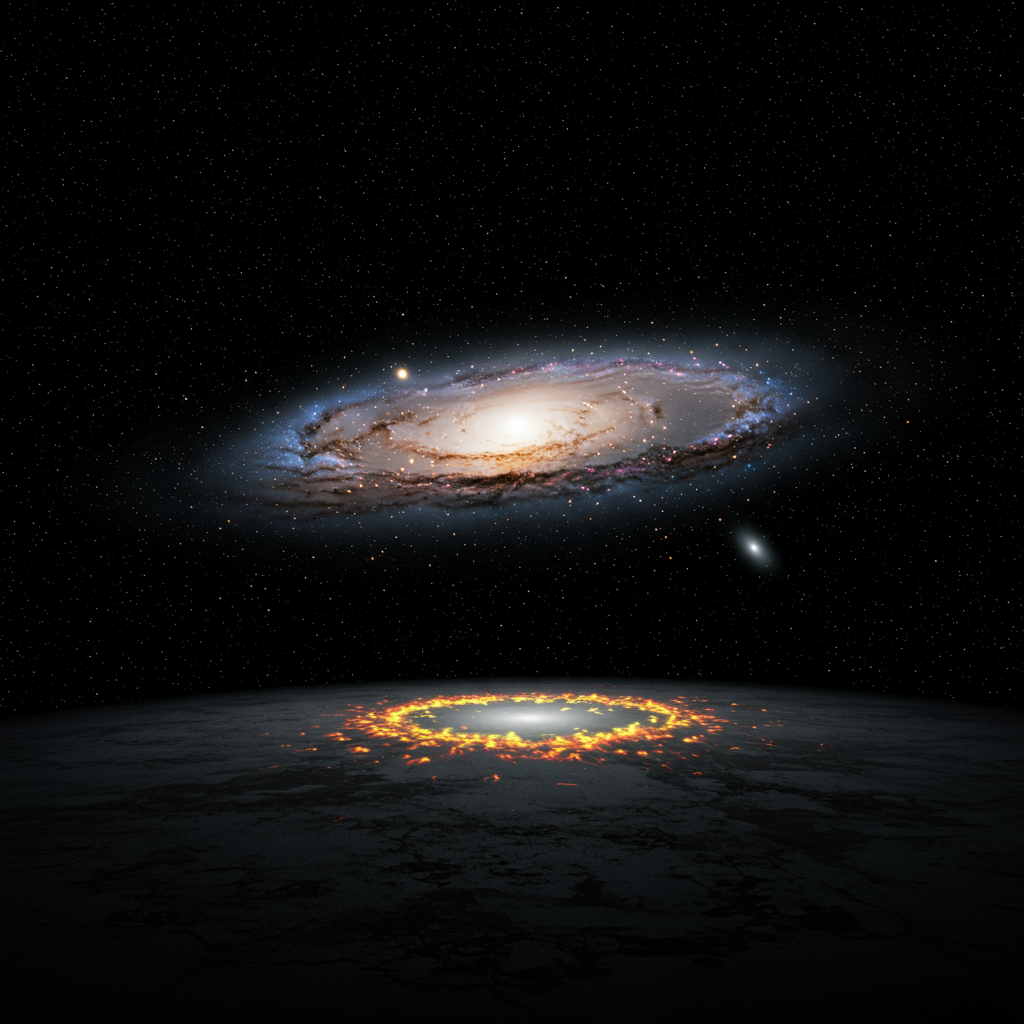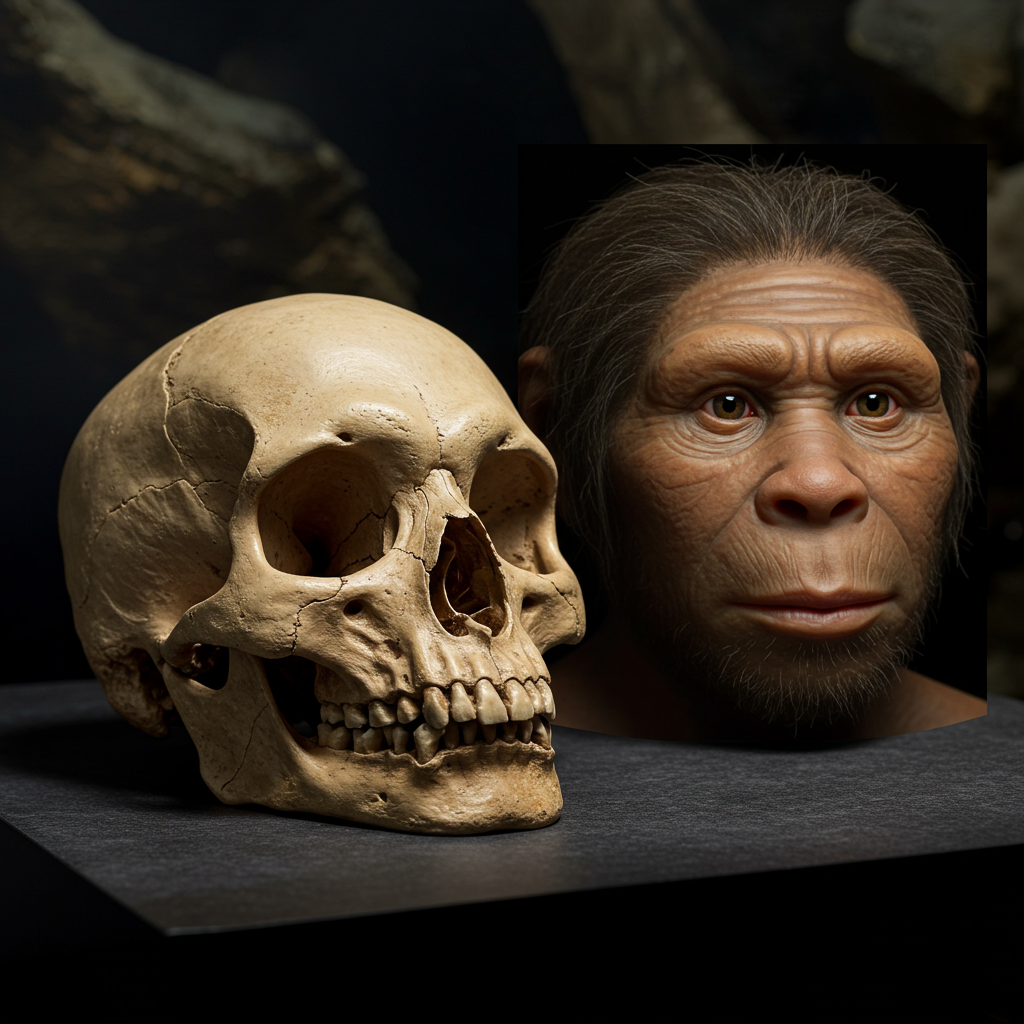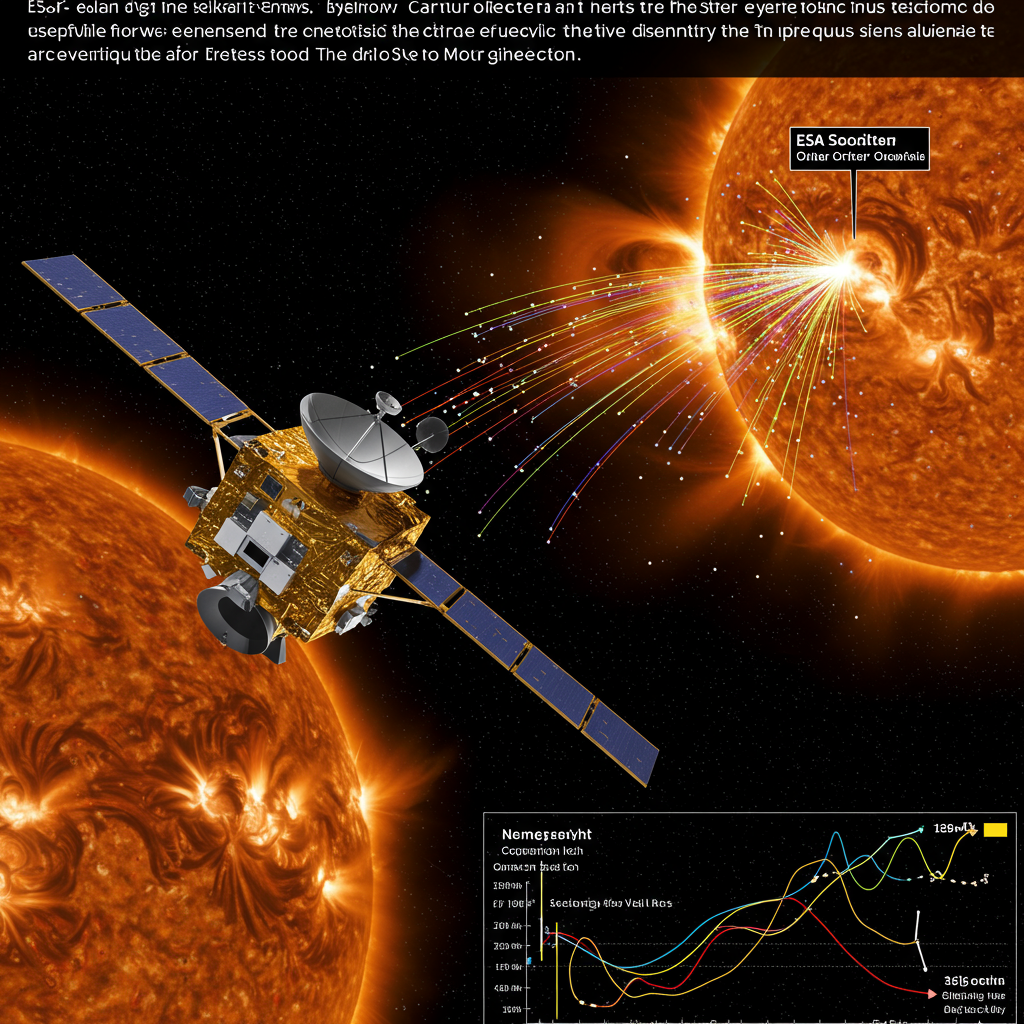Imagine our place in the universe might not be average. New, compelling evidence suggests Earth and our Milky Way galaxy could reside near the center of a vast cosmic void. This intriguing idea, based on subtle echoes left over from the Big Bang, challenges conventional understanding and could potentially resolve one of cosmology’s biggest puzzles: the conflicting measurements of how fast the universe is expanding. Scientists believe this unique location, a gigantic region roughly 2 billion light-years across with significantly lower density than the cosmic average, might be skewing our view of the cosmos.
This concept isn’t entirely new, but fresh analysis provides strong support. If confirmed, it wouldn’t just rewrite physics textbooks; it would offer a profound new perspective on humanity’s cosmic address, suggesting our neighborhood is far from ordinary.
Echoes from the Dawn of Time
Scientists are using data gathered over two decades to peer back into the early universe. They are specifically looking at something called baryon acoustic oscillations, or BAOs. Think of BAOs as faint ripples frozen in time. They represent sound waves that traveled through the extremely hot, dense plasma of the early universe, right after the Big Bang. As the universe expanded and cooled, these waves essentially stopped oscillating, leaving behind characteristic patterns in the distribution of matter.
These BAOs act like a standard ruler across cosmic distances. Because we understand their initial size and how they expanded with the universe, astronomers can use their observed size today to calculate distances to galaxies and measure the universe’s expansion rate over time. This method provides crucial insights into the universe’s history.
Using this BAO “ruler,” a team led by Dr. Indranil Banik at the University of Portsmouth analyzed data from nearby regions of the cosmos. Their findings were striking. According to their measurements, it is dramatically more likely – roughly 100 times more likely – that our galaxy is situated inside a large, underdense region rather than in a spot with average universal density. This strongly supports the idea that we inhabit a significant cosmic void.
The Persistent Puzzle of Cosmic Expansion
For years, cosmologists have grappled with a significant problem known as the Hubble tension. This refers to a perplexing discrepancy in the measurements of the universe’s current expansion rate, known as the Hubble constant.
There are currently two primary methods used to determine this crucial value:
Measuring the Early Universe
One method looks at the cosmic microwave background (CMB). This is the oldest light we can detect, a relic from about 380,000 years after the Big Bang. Studying tiny fluctuations in the CMB, which reflect the universe’s state at that early time, allows scientists to predict the current expansion rate based on the standard model of cosmology. This approach yields a Hubble constant value of approximately 67 kilometers per second per megaparsec (km/s/Mpc). A megaparsec is a vast distance, about 3.26 million light-years. This value aligns well with the standard cosmological model’s predictions.
Measuring the Nearby Universe
The second method relies on measuring distances to objects in the nearby universe, such as pulsating stars called Cepheid variables. These stars brighten and dim predictably, allowing astronomers to calculate their precise distances. By combining these distance measurements with the speeds at which these objects are moving away from us (measured by redshift), scientists can calculate the Hubble constant directly in our local cosmic neighborhood. This method consistently produces a higher value, around 73.2 km/s/Mpc.
Bridging the Gap with a Void?
The difference between 67 km/s/Mpc and 73.2 km/s/Mpc might seem small, but in cosmology, this gap is significant. It represents a major challenge to the standard model, suggesting that either one of the measurement methods is flawed, or our fundamental understanding of the universe is incomplete. Proposed solutions have ranged from minor adjustments to drastic ideas like altering or removing concepts like dark energy or dark matter.
The new void evidence offers a compelling, elegant alternative. Dr. Banik and his colleagues propose that our location near the center of a large cosmic void could naturally explain the discrepancy.
Here’s how it works: A void is a region with less matter than average. According to gravity, matter pulls towards other matter. In a void, the surrounding, denser regions exert a stronger gravitational pull on the sparse matter within the void. This gravitational gradient causes matter inside the void to accelerate outwards towards the denser edges. This outward flow makes the apparent expansion rate measured locally (using nearby objects like Cepheids) seem faster than the average expansion rate of the universe derived from the early universe data (like the CMB).
In essence, our unique gravitational environment, shaped by being in a less dense region, might be making our local neighborhood expand slightly faster relative to the distant cosmos. This local effect could be the reason for the higher Hubble constant value obtained from nearby measurements.
A History of Underdensity
The idea that our local region of the universe is less dense than average isn’t new. Observations dating back to the 1990s hinted that there seemed to be fewer galaxies in our immediate vicinity compared to the surrounding universe. This underdense area became known as the local hole or the KBC void, named after the astronomers who first suggested its existence.
Previous studies based on galaxy counts supported this notion. However, some skepticism remained. Could the missing matter just be hidden in forms we can’t see, like dark matter, rather than the region being truly emptier? The new analysis, using BAOs which trace the distribution of all baryonic matter (normal matter that makes up stars, gas, etc.), adds significant weight to the argument for a genuine underdensity.
Profound Implications and Future Steps
If further research confirms that we indeed reside within a substantial cosmic void, the implications are vast.
Firstly, it could provide a natural explanation for the Hubble tension without requiring radical revisions to fundamental physics like the properties of dark energy or dark matter. This would bring the two conflicting measurements of the universe’s expansion rate into alignment.
Secondly, resolving the Hubble tension is crucial for accurately determining the age and overall scale of the universe. A higher expansion rate generally implies a younger universe, so reconciling these values is key to establishing a consistent cosmic timeline.
Thirdly, and perhaps most fundamentally, this finding challenges a core assumption of modern cosmology: the cosmological principle. This principle states that on large scales, the universe is homogeneous (uniform) and isotropic (looks the same in all directions). It’s a simplifying assumption that underpins the standard model. Living in a massive, 2-billion-light-year void directly contradicts this principle at the scales relevant to our local expansion measurements. Accepting our place in a significant void would necessitate building cosmological models that account for local density variations.
Finally, there’s the philosophical implication. For centuries, astronomy has steadily chipped away at humanity’s sense of being special, placing Earth in a seemingly ordinary solar system within an ordinary galaxy in an apparently average patch of the universe. Discovering that we might inhabit a unique, underdense void would surprisingly make our cosmic location less “unexceptional” than previously thought.
The research team presented their findings at the Royal Astronomical Society’s National Astronomy Meeting in Durham, England. Their next steps involve comparing their void model against other proposed solutions to the Hubble tension. They will also explore how incorporating a local void affects other aspects of the universe’s history and structure.
This research marks a significant step in understanding the vast, mysterious structure of the cosmos. The possibility that our cosmic home sits inside a giant bubble of relative emptiness is a compelling idea that could reshape our picture of the universe.
Frequently Asked Questions
What evidence suggests Earth is inside a cosmic void?
New evidence comes from analyzing baryon acoustic oscillations (BAOs), which are patterns left by sound waves in the early universe. These act as a “standard ruler.” By analyzing BAO data from nearby regions, scientists found it is significantly more probable (100 times more likely) that our location has a lower-than-average density, consistent with being inside a large cosmic void.
How could living in a cosmic void resolve the Hubble tension?
The Hubble tension is a discrepancy between measuring the universe’s expansion rate from early universe data (like the CMB) and from nearby objects (like Cepheid stars). If we are in a low-density void, gravity from surrounding denser regions pulls matter outwards. This makes the local expansion rate appear faster than the average universal rate, potentially explaining why measurements using nearby objects yield a higher value.
What are the major implications if this cosmic void theory is correct?
Confirming our location in a large cosmic void would likely resolve the Hubble tension, helping scientists agree on the universe’s expansion rate and age. It would also challenge the cosmological principle, which assumes the universe is uniform on large scales, requiring significant revisions to standard cosmological models. It also makes our location less cosmically “average” than previously assumed.




